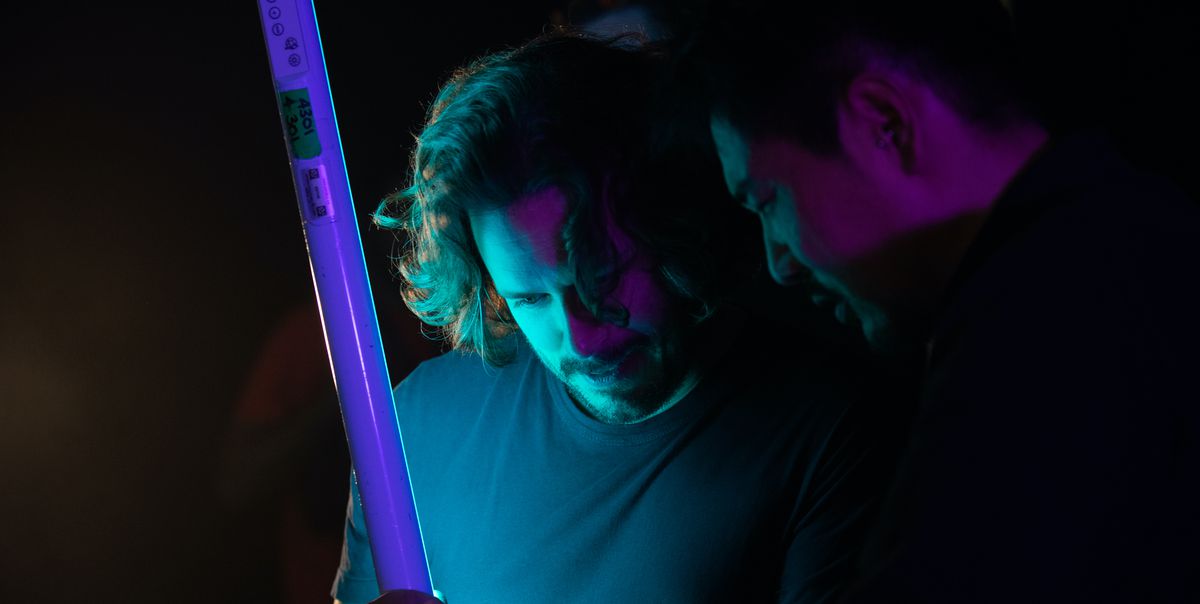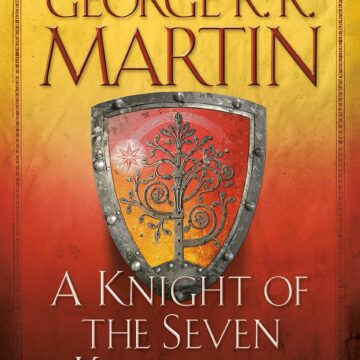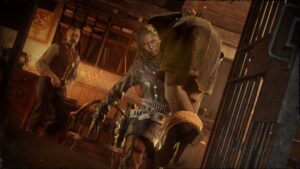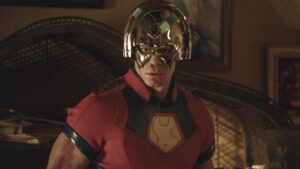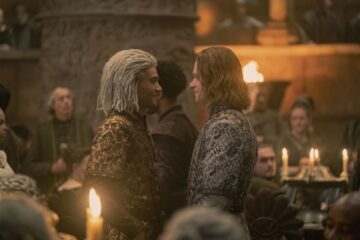Edgar Wright’s new horror-thriller Last Night in Soho is packed with visual references. Cinephiles may recognize a shot from Roman Polanski’s Repulsion here, a color scheme from Dario Argento’s Suspiria there. He loved Rita Tushingham in Tony Richardson’s 1961 drama A Taste of Honey so much, he cast her as a grandmother in Soho. He admired the Café De Paris in 1961’s West End Jungle, so he re-created it as a prominent set for one of Soho’s key scenes. His list of film inspirations is long and thorough. They extend to music, as well — he’s said the entire film started as a series of impressions around the ’60s playlist he curated from his parents’ records.
But he wants viewers to understand that they don’t need to know any of this to watch the movie, which stars Thomasin McKenzie as a shy London fashion-school student having visions that connect her with a 1960s wannabe stage star (Anya Taylor-Joy) and her unsettling new love interest (former Doctor Who star Matt Smith). Ahead of the film’s release, the writer-director of Shaun Vs. the Dead, Hot Fuzz, Baby Driver, Scott Pilgrim Vs. the World, and more indelible referential movies spoke to Polygon about the movie’s horror roots and inspirations, the giant playlist of films he gave his cast to consider as inspirations, and why he doesn’t want to play the Stanley Kubrick auteur game.

There’s been a lot of conversation about whether Last Night in Soho should be considered a giallo film. Are you invested in the debate, or in how it’s categorized?
Edgar Wright: I mean, I enjoy giallo films, and certainly they were an influence. But in a weird way, I found myself tumbling backward to find the source of those movies’ influences as well. The movies I looked to for this movie were the films that influenced the great giallo films, going back to British directors like Alfred Hitchcock and Michael Powell and Emeric Pressburger.
I’m not going to deny the influence of Deep Red or The Bird With the Crystal Plumage, because I love those films. But I was interested in what those directors were influenced by. Black Narcissus is not a giallo film, but there are lots of elements in Black Narcissus that obviously inspired giallo movies. What I do like about the best of those movies was how they become expressionistic and operatic, and maybe have a slow burn from one thing to another. The idea of ending Last Night in Soho with operatic horror was always the destination for me.
Thomasin McKenzie has said that when you brought her on the film, you gave her a playlist of 50 or so movies to watch —
I will say this — I always say this. I gave everybody on the cast and crew a hub, and said, “Watch as much as you want to, or not!” But the two most diligent people were Thomasin and Odile Dicks-Mireaux, my costume designer, who I think watched all of them. But I never told her she had to watch all 50! She’s just a very diligent young lady.
What did you want your cast and crew to get from the list?
Well, they weren’t all horror movies! In fact, more than half of them were ’60s dramas, with some documentaries as well. I pointed different people at different things. Like, with Matt and Anya, I thought it would be interesting to show them films from the time, because screen acting was different back then. So I asked Anya to watch John Schlesinger’s Darling, or films like [Edmond T. Gréville’s] Beat Girl.
I think all of them, Matt and Anya and Thomasin, watched Ken Loach’s Poor Cow, not just because Terence Stamp [who has a significant role in Last Night in Soho] is in it. It’s also interesting to contrast a movie like Darling with Ken Russell’s work. Because what’s interesting in something like Poor Cow, or even in the documentaries, is that you see the reality of the ’60s, rather than the movie version of the ’60s. In movies from the ’60s, you obviously have costume designers and maybe a slightly heightened style. But sometimes when you watch documentaries, or even lower-budget fiction films, you’re getting real, off-the-rack clothes for costumes. There’s a film called like Secrets of a Windmill Girl, with Pauline Collins. It’s not the best movie of all time. It’s pretty exploitative, a moralistic drama. But because it’s quite a cheap movie, it feels pretty accurate in terms of the actual clothes of the time.

You’ve talked about how this movie started with your own giant 1960s music playlist, and then there’s this film list. Is there a curatorial aspect to your work? Do you want to draw people to this music or these movies? Is this more about reflecting what you love?
I guess it’s a bit of both! It’s funny, doing the press for this movie, I’ve written more lists [for cultural outlets] than I ever have before. Next movie I make, I’m not going to write any lists.
I think the thing with me in terms of working with a crew is that I just default to total transparency. So many directors get this idea that they should be some sort of dark, mysterious auteur of never telling their crew what the hell’s going on, and saying, “This is my method, nobody should know what I’m doing.” You hear too many stories about people trying to be the next Stanley Kubrick, and shutting the rest of the crew out. I’m not gonna mention any names, but I go the opposite way. I will say to my cast and crew — particularly working with a crew where we’re doing a lot of ’60s scenes — “I will give you as much to listen to, watch, read, look at as you could want, and you can, but it’s not required reading. If you want some stuff to dip into, this is interesting.”
I feel the same way about the movies. Sometimes people ask me, “What films should I watch before Last Night in Soho? You don’t need to watch any films before watching it! The film should work if it’s the first movie you’ve ever seen. [Laughs] Imagine that, if Last Night in Soho was the first movie you’ve ever watched. But it should work on its own terms. All the other stuff is just, like, further reading, “If you enjoyed this, listen to this.” I put out a playlist for theaters, “Here are things to get you in the mood. Here’s a playlist, if theaters want to play this in the auditorium before the film. These are songs that are not in the movie, but they’re all in the right time, just as mood-setter.” But I don’t want to give anybody homework! It’s just further reading.
But I do want to find that person whose first film ever is Last Night in Soho. There’s got to be somebody out there.
They might have to be very young, though.
Yes. They can get away with it if they have irresponsible parents.
Polygon will have more from Edgar Wright next week, as he walks us through the process of shooting one of Last Night in Soho’s most complicated and compelling scenes.
- All
- around
- BEST
- bird
- Bit
- British
- Collins
- Conversation
- Crew
- Crystal
- debate
- designer
- DID
- documentaries
- Drama
- Fiction
- Film
- films
- First
- Focus
- funny
- game
- great
- here
- How
- HTTPS
- i
- idea
- influence
- interest
- IT
- Key
- light
- List
- Lists
- London
- looked
- love
- May
- mood
- movie
- Movies
- Music
- names
- Neon
- Other
- parents
- paris
- People
- play
- press
- Process
- Reading
- Reality
- records
- REST
- Screen
- Series
- set
- So
- Stage
- stanley
- started
- Stories
- Student
- The
- The Source
- time
- Transparency
- us
- viewers
- Watch
- week
- What
- WHO
- Work
